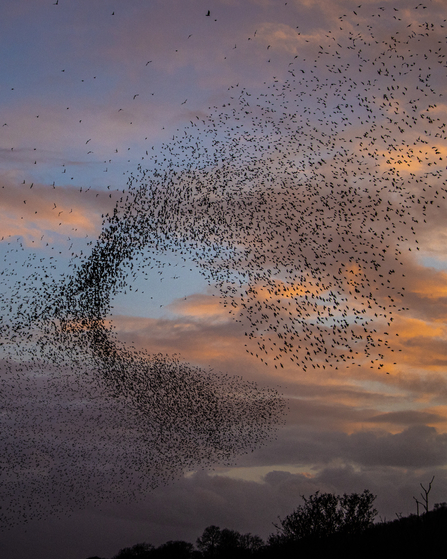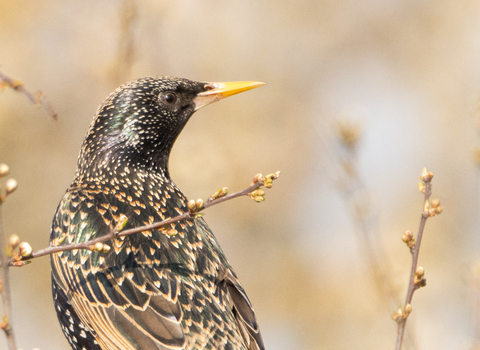The sun begins to sets and excitement starts to rise. People gather and huddle with cameras, binoculars, hot chocolate and excited chat ripples through the stirring crowd with their eyes all fixed towards the bruising sky. Something special is about to happen.
Slowly, dark black birds, like flying arrow heads, begin to dart past and gradually their numbers start to swell. Flocks of dozens arrive, soon hundreds, thousands and before long the sky is darkened with birds. People have traveled from all over to be here, to marvel under a dancing cloud of birds and to hear the flapping of a hundred thousand wings.
There are few, if any, wildlife experiences in the UK that can compare to a spectacular starling murmuration, and this winter you can enjoy one too!
The starling is a bird smaller than a blackbird with pointy head and wings and can appear quite dull and black at a distance. If you ever get to enjoy one a bit closer, you’ll see they sparkle and shine with iridescent purples and greens like spilt petrol.
Unfortunately, in Bristol we have lost over 96% of our starlings. A once common bird that has virtually dropped from our city’s skies. Loss of habitat and roosting sites, combined with a fall in insect numbers, are likely to blame. Reports from the 1970’s describe how these birds once used to murmurate over Temple Meads station. Just imagine how your winter commute could be improved by a dancing sky of starlings twirling over the city centre!



